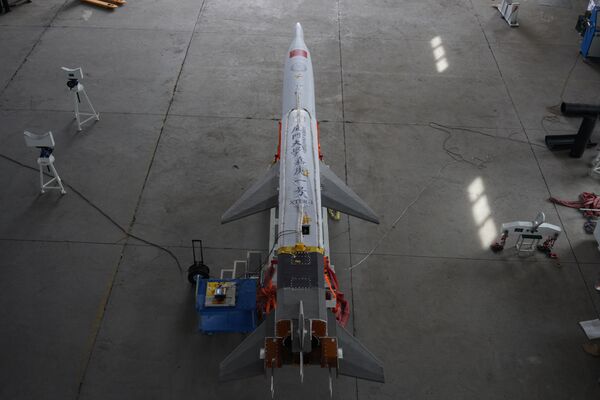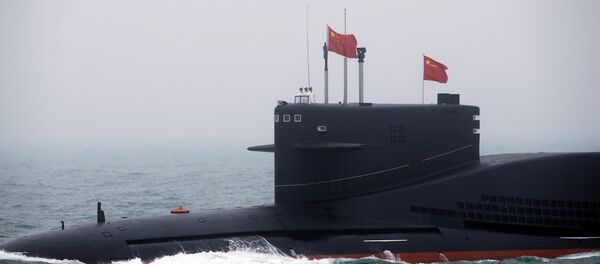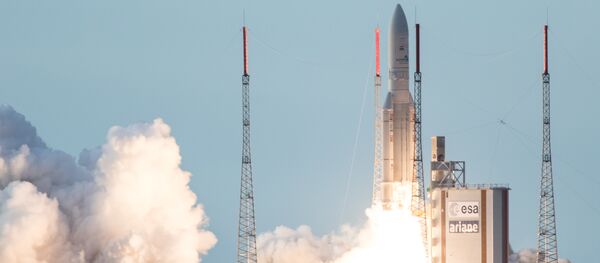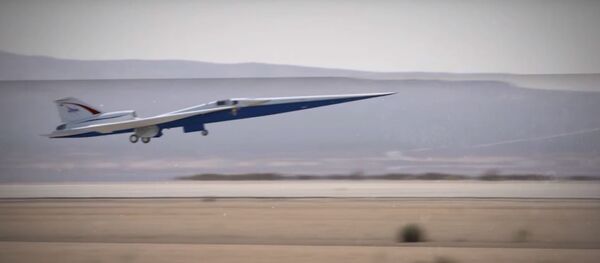However, researchers at Xiamen University in Fujian tested just such a craft in China's Gobi desert Tuesday morning, according to a Tuesday statement by the university. They call it "Jiageng-1" after Chen Jiageng, a businessman who founded Xiamen University in 1921, and they've been working on it since 2008. The project was partially funded by the Chinese military.
Xiamen University Aerospace Academy with Beijing Lingkong Tianxing Technology Co., Ltd. successfully launched and recovered the reusable winged suborbital JiaGeng-1 technology tester rocket. (max alt 26.2Km)
— LaunchStuff (@LaunchStuff) April 23, 2019
ℹ:https://t.co/kxtCxLBAla pic.twitter.com/zJE3sB6QJF
The plane was powered by a winged rocket less than nine meters (29.5 feet) tall that weighed more than three tonnes, according to a statement on the university's website. However, other details about its flight remain classified.

The name is a nod to (or a dig at?) US plane maker Boeing's X-51 Waverider, a hypersonic passenger aircraft the company announced was in development last June, Sputnik reported. If successful, the plane would be able to make the trip from New York to London — typically a seven-hour flight — in about two hours, the company boasts.
However, unlike Boeing's plane, the Jiageng-1 rides on two layers of "shock waves," or extremely hot layers of gas: one is underneath the plane, and the other goes in the air-inlet duct of its ramjet engine.
"Conducting hypersonic study in a university is quite difficult, especially when it comes to the stage to bring the concept from laboratory to the sky," Chen Yong, an associate professor of physics who has been involved in a hypersonic research programme at Shanghai Jiao Tong University, told SCMP.
The JiaGeng-1 winged suborbital rocket prototype developed by Xiamen University Aerospace Academy with Beijing Lingkong Tianxing Technology. Credit: Xiamen University Aerospace Academy/Beijing Lingkong Tianxing Technology Co., Ltd (Via @LaucnhStuff) pic.twitter.com/2ga03iQKRi
— Rocket Rundown (@RocketRundown) April 23, 2019
Ramjet technology has been one of the major stepping stones for developing hypersonic aircraft: the engine compresses air rushing into the air-inlet duct where it mixes with fuel and is accelerated out the back, creating huge amounts of thrust at high speeds. This is unlike the turbojet engines on modern supersonic aircraft, which use a gas-driven fan to accelerate the air. The ramjet has no moving parts, but doesn't work at low speeds, whereas the turbojet has trouble pushing aircraft beyond Mach 2 or Mach 3.
SCMP notes the design choice was "daring," explaining that while managing two shockwaves is obviously twice as hard as managing one, the vehicle's design offers some distinct advantages compared to Boeing's plane. For example, it can make the transition between supersonic and hypersonic speeds more smoothly; it's also more fuel-efficient.
US defense figures are keenly aware of the deficit in US development of hypersonic technology, with US Navy Admiral Harry Harris lamenting to the US Congress last year that China "outpaces" the US in the field.
In the Xiamen University article the vehicle's name was translated as "JiaGeng-1" but this post by one of Xiaomi's weibo accounts calls it "TianXing I-1" which matches earlier rumors: https://t.co/RKcAPKZLZa
— LaunchStuff (@LaunchStuff) April 23, 2019
ℹ:https://t.co/pSYSwAfDOv pic.twitter.com/Ht2JLeT3eg
"In the last year, China has tested more hypersonic weapons than we have in a decade," Michael Griffin, the Pentagon's undersecretary for research and engineering, noted last December. "We've got to fix that."
This isn't the only hypersonic plane in the works in China, either. Chinese researchers tested a demonstration version of a reusable hypersonic spacecraft in the Gobi in March 2018, and in August tested the "Starry Sky-2" waverider-type plane, a military project by China's Academy of Aerospace Aerodynamics.
In February 2018, a paper published by Cui Kai of the Chinese Academy of Sciences' Key Laboratory of High Temperature Gas Dynamics in the Chinese journal Physics, Mechanics and Astronomy discussed wind tunnel tests of a hypersonic biplane that could reach Mach 7, or roughly 5,600 mph. Sputnik reported the plane could make the trip from Beijing to New York, which typically takes 14 hours on a regular subsonic airliner, in "a couple hours."







